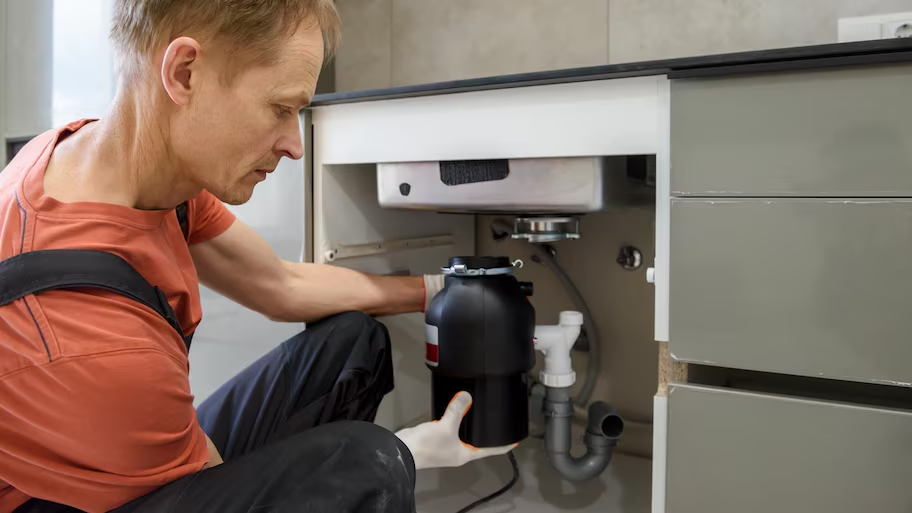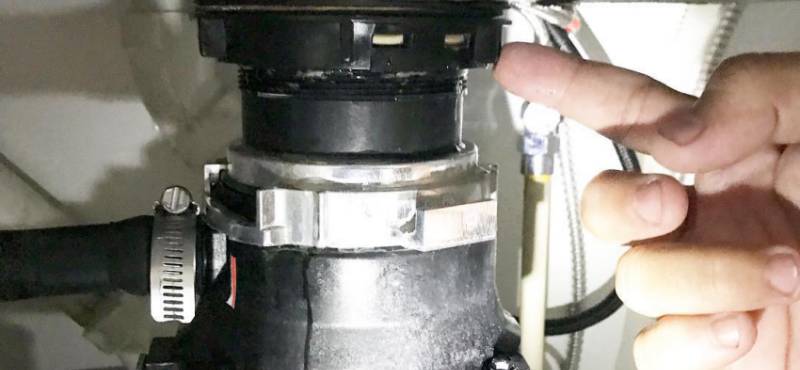Effective Methods for Fixing a Dripping Garbage Disposal
Effective Methods for Fixing a Dripping Garbage Disposal
Blog Article
Here below you will discover lots of first-rate ideas in relation to Why Is .

Garbage disposals are necessary cooking area appliances that assist in dealing with food waste successfully. However, a dripping garbage disposal can be a frustrating and messy issue to deal with. Thankfully, lots of leakages can be repaired quickly with a couple of straightforward actions. In this short article, we will go over how to repair a dripping garbage disposal successfully.
Introduction
Garbage disposals are installed under kitchen area sinks and are made to shred food waste into smaller pieces, allowing it to go through the plumbing system easily. While these gadgets are generally reputable, leakages can occur in time as a result of deterioration, loosened links, or damage to the system.
Step-by-Step Overview to Dealing With a Dripping Waste Disposal Unit
Turn Off the Power
Before trying any fixings, make certain that the power to the waste disposal unit system is shut off to stop the danger of electric shock.
Situate the Leak
Identify the precise location of the leak and establish the cause
Tighten up Connections
Use a wrench to tighten up any loosened links in between the disposal unit and the plumbing system.
Replace Seals or Gaskets
If the leakage is because of worn seals or gaskets, eliminate the old elements and change them with new ones.
Patching Fractures or Holes
For cracks or openings in the disposal unit, usage epoxy or an appropriate patching material to secure the broken area.
Recognizing the Source of the Leak
Before attempting to take care of a leaking garbage disposal, it is necessary to identify the source of the leak. This can normally be done via aesthetic evaluation or by conducting straightforward tests.
Visual Examination
Check the garbage disposal unit very carefully for any kind of signs of water leak. Pay very close attention to areas around seals, gaskets, and connection points.
Examining for Leaks
One way to evaluate for leaks is by running water through the disposal system and looking for any type of noticeable signs of leak.
Common Causes of Leakages in Trash Disposals
Worn Seals and Gaskets
Seals and gaskets play a critical role in protecting against water from dripping out of the garbage disposal. With time, these components can deteriorate, bring about leaks around the disposal unit.
Loose Connections
The links between the waste disposal unit and the plumbing system can end up being loosened gradually, creating water to leakage out during procedure.
Splits or Holes in the Disposal Unit
Physical damages to the waste disposal unit, such as splits or holes in the real estate, can additionally lead to leaks.
Devices and Materials Needed for Taking Care Of a Dripping Waste Disposal Unit
Prior to beginning the repair work procedure, collect the required devices and materials, including a screwdriver, flexible wrench, plumbing professional's putty, substitute seals or gaskets, and epoxy or patching material for fixing fractures or openings.
Examining the Waste Disposal Unit After Repair Work
Once the fixing is total, examine the waste disposal unit by running water through it to guarantee that the leakage has been solved.
Preventive Upkeep Tips to Prevent Future Leaks
To stop future leakages, it is essential to perform routine maintenance on your garbage disposal. This consists of keeping it clean, avoiding placing non-food things or hard items down the disposal, and periodically looking for leakages or various other concerns.
Conclusion
Finally, fixing a dripping garbage disposal is a reasonably simple procedure that can be completed with basic devices and materials. By following the actions detailed in this post and exercising preventive upkeep, you can maintain your waste disposal unit in good working condition and prevent expensive repair work in the future.
HERE’S HOW TO FIX YOUR GARBAGE DISPOSAL
WHAT TO DO IF SOMETHING IS STUCK IN YOUR GARBAGE DISPOSAL
If the impeller won’t turn, there’s probably something stuck in the disposal. It could be a steak bone or peach pit, although plumbers report pulling all sorts of inappropriate objects out of disposals, such as bottle caps or aluminum foil. Make sure power to the disposal is off, and look inside to see if you can see the source of the jam.
Never stick your fingers in a disposal. Pull out anything you see with tongs or pliers.
If the disposal still won’t work, it may be time to call a plumber or consider buying a new disposal. GEM Plumbing & Heating is here for all of your garbage disposal needs.
WHAT TO DO IF YOUR GARBAGE DISPOSAL DRAIN IS CLOGGED
Take everything out from underneath your sink and put a bucket or other container under your disposal to catch any water that drains out. Disconnect your disposal from the power supply. If it’s plugged into a wall outlet, unplug it. If it’s hardwired into an electrical box, go to the electrical panel and turn off the breaker for the disposal. Pour ¼ cup of baking soda into the drain, followed by ½ cup of white vinegar. Give the solution a few minutes to fizz and do its work. Look into the disposal with a flashlight to see if you can see an object that might be causing the clog. If you see it, remove it using tongs or pliers. MORE TIPS ON DEALING WITH A CLOGGED GARBAGE DISPOSAL
Never use drain cleaner in a garbage disposal. It can damage the plastic parts inside the disposal. You can also be splashed with the caustic liquid while working to clear the clog. Beware! Never stick your fingers into a garbage disposal. Trust us — not a good idea. In many instances, your dishwasher drains through your garbage disposal. This allows the disposal to grind any large food particles that may be drained out of your dishwasher. There are some jurisdictions, however, where the plumbing code prohibits such a connection. WHAT TO DO WHEN YOUR DISHWASHER DRAINS THROUGH THE DISPOSAL
Run some water in the sink so your plunger has at least a ½-inch of water to create a seal and plunge vigorously up and down several times. You may need to repeat this several times. Run hot water down the drain to clear any residue that remains.

I am very interested in Why Is and I'm hoping you enjoyed reading the blog entry. Enjoyed our piece of writing? Please share it. Help other people discover it. Thanks for your time invested reading it.
Article Report this page